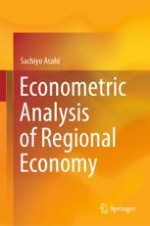2024 | OriginalPaper | Buchkapitel
2. Study of Total Fertility Rate of Women in Employment, by Industrial Sector: Estimation of Japanese National and Prefectural Data Using the Own-Children Method
verfasst von : Sachiyo Asahi
Erschienen in: Econometric Analysis of Regional Economy
Verlag: Springer Nature Singapore
Aktivieren Sie unsere intelligente Suche, um passende Fachinhalte oder Patente zu finden.
Wählen Sie Textabschnitte aus um mit Künstlicher Intelligenz passenden Patente zu finden. powered by
Markieren Sie Textabschnitte, um KI-gestützt weitere passende Inhalte zu finden. powered by
